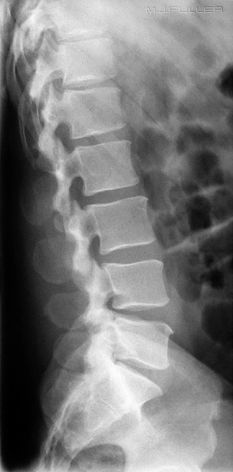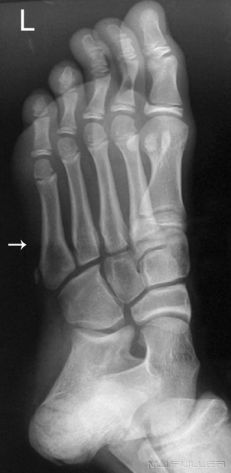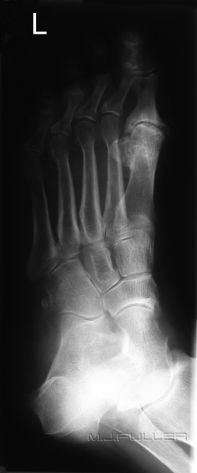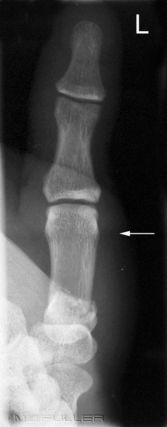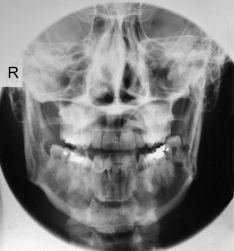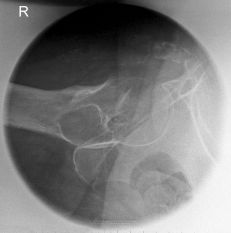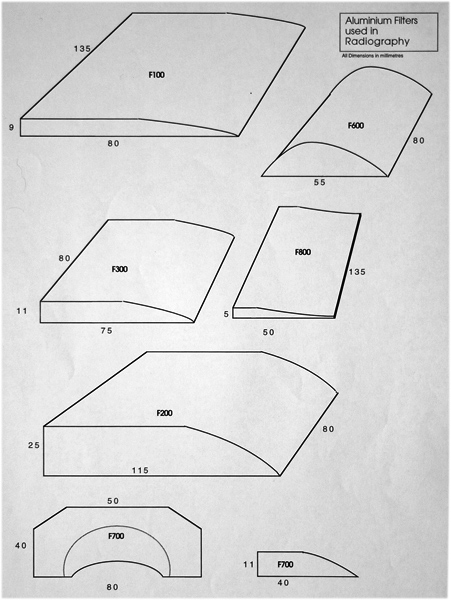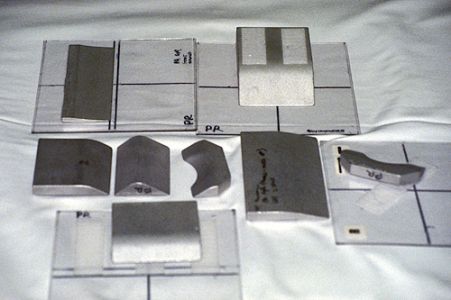Aluminium Filter Techniques in Radiography
Introduction
Filter ApplicationsOne of the limitations of "plain film" radiography is that the X-ray beam is, for practical purposes, uniform in its intensity. A notable exception is the anode heel effect, but this is limited in its utility and effectiveness. Using aluminium filters enables the utilisation of an X-ray beam which is graduated in its intensity. The shaped aluminium filter causes variable absorption of the X-ray beam across its change in thickness. The uses are only limited by the imagination of the radiographer .
Lateral Lumbar Spine
Lateral Thoracic Spine
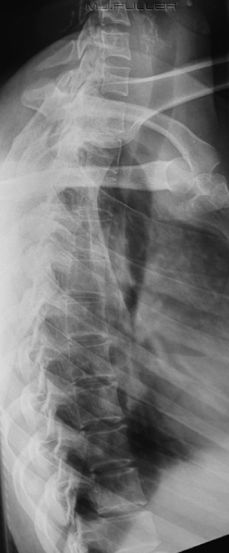 | This lateral thoracic spine image was taken with a "humpback" aluminium filter attached to the Light Beam Diaphragm. The filter is centred to the mid-thoracic vertebra. Note that this is a modified lateral thoracic spine position. This positioning technique is discussed on another page in this wiki. |
AP Thoracic Spine
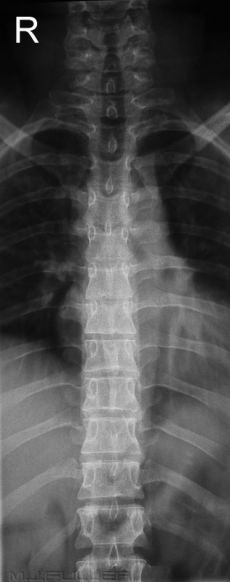 | This AP thoracic spine image was taken with an aluminium filter attached to the Light Beam Diaphragm (LBD). The filter is centred to the mid-thoracic vertebra with the thickest end at the top of the image. A breathing exposure technique is used to blur out the soft tissue structures. Note- this is a radiograph not a digital image It is also noteworthy that this affect is now achieved using digital radiography without aluminium filters. . |
Oblique Foot
PA Thumb
AP Mandible
Lateral Horizontal Ray Hip
Barium Enema Decubitus Abdomen
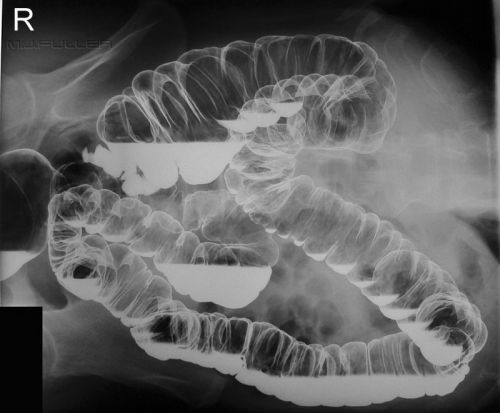 | This image was taken using an aluminium filter with its greatest thickness positioned to correspond with right side of the abdomen. This is a radiograph not a digital image Further Reading
|
Advantages of Filters
Aluminium filters are one of the most useful aids available to the plain film radiographer. A selection of filters in different thicknesses , shapes and tapers allows the radiographer to select a filter whenever there is anatomy of significant varying thickness to be imaged with a single exposure. Aluminium filters are quick and easy to use. They are also long-lasting and they have the potential to save on unnecessary expenditure on film (one exposure instead of two).
The thicker the aluminium filter, the greater the beam hardening. This will reduce the radiation dose to the patient by absorbing some of the lower energy photons from the X-ray beam
Disadvantages of Filters
The aluminium filter may produce an artifact if the edge of the filter is projected onto the film/receptor. In practice, this is of minimal concern as the image of the filter's edge is usually barely perceptible. If the radiographer is concerned that the artifact from the edge of the filter will be confusing to the radiologist, it should be labelled on the film/image.
The aluminium filter will remove lower energy photons from the X-ray beam. Whilst this will reduce the radiation dose to the patient, it will also cause a reduction in image contrast. This is not usually a problem, but is worthy of consideration when using thick filtration, and will be most noticeable when two filters are "piggy backed" together. Of course, patient anatomy is better displayed at reduced contrast rather than not at all.
A full set of aluminium filters is not cheap, but they do not get worn out with use.
The filters used on this page are all available from Gray-Tech filters in Australia. To give you some idea of the range, see the image below
My understanding is that Gray-Tech filters will send filters anywhere in the world. Check their website at <a class="external" href="http://www.gray-tech.com.au/filter_F600.html" rel="nofollow" target="_blank">http://www.gray-tech.com.au/filter_F600.html.</a>
(see thread below for further information)
I have no commercial arrangement or association with Gray-Tech filters.
Discussion
The utility of aluminium filters has waned with the introduction of digital radiography. The ability of CR and DR to display a larger range of tissue densities has largely obviated the need for aluminium filters. Despite this fact, aluminium filters still have a role in the digital X-ray suite, albeit in a diminished capacity. It is also noteworthy that many countries are still using non-digital imaging techniques and will probably continue to do so for many years to come.
The use of aluminium filters was a significant part of the craft of radiography prior to digital imaging and its loss of utility is lamented by many an old school radiographer. For those craftsman involved in developer and fixer radiography, be careful of what you wish for!
... back to the Applied Radiography home page
... back to the Wikiradiography home page



